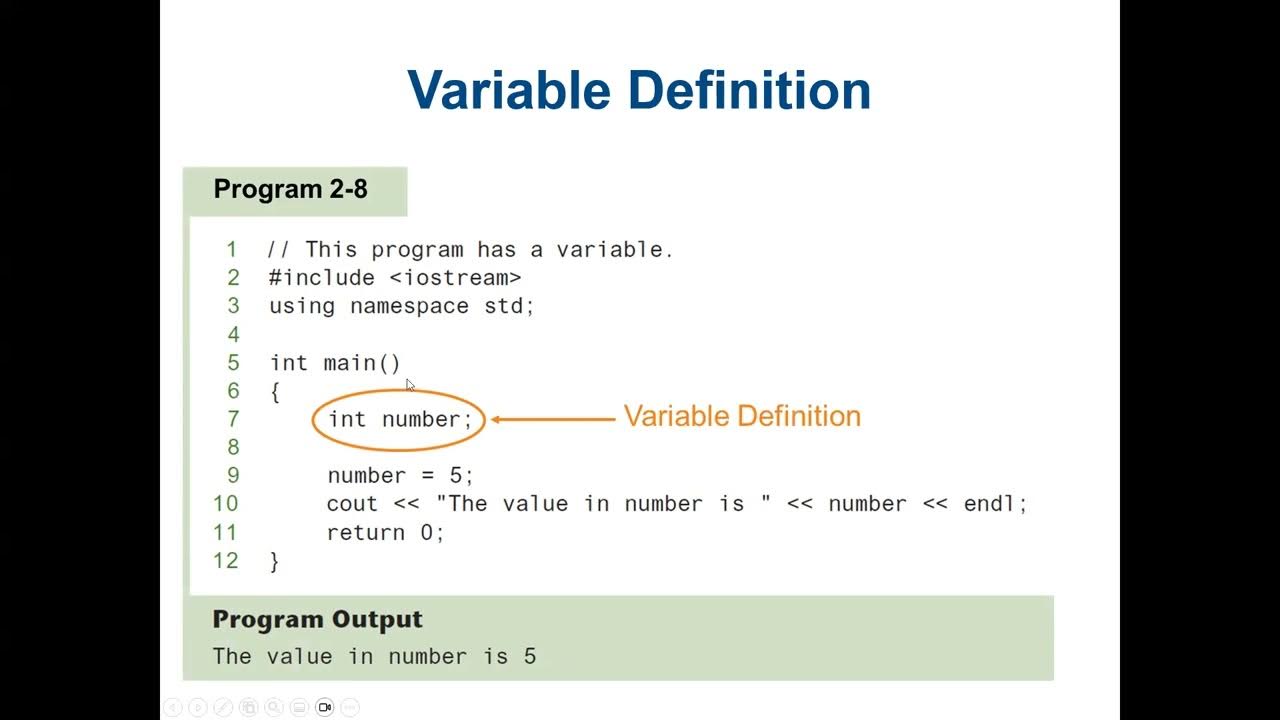02 - Programação em linguagem C - Criando o primeiro programa
Summary
TLDRIn this video, Fábio from Bon Treinamentos introduces beginners to programming in C language by creating a simple 'Hello World' program. He explains the structure of a C program, including the use of comments, include directives, the main function, and the printf function. Fábio also demonstrates variable declaration and input/output functions like scanf. Good programming practices, such as code readability and naming conventions, are emphasized. The video aims to provide a foundational understanding of C programming to help viewers develop more complex programs in future lessons.
Takeaways
- 😀 Understanding C language basics: The video introduces the fundamentals of writing a C program, including the structure and key components of the code.
- 😀 Comments in C: Multi-line comments use `/* ... */` and single-line comments use `// ...` to annotate the code for readability and explanation.
- 😀 The importance of `#include` directives: These tell the preprocessor to include libraries such as `stdio.h` for input/output operations and `stdlib.h` for standard functions.
- 😀 `void main()` function: The main function is the entry point of a C program. `void` indicates that this function does not return a value.
- 😀 Using `printf()` to display messages: `printf()` is used to output messages to the console, and special characters like ` ` create new lines.
- 😀 The semicolon: Each statement in C must end with a semicolon, marking the end of a command or instruction.
- 😀 Variables and data types: The video introduces variable declarations using `int` for integers and demonstrates how to store user input in variables.
- 😀 `scanf()` for user input: `scanf()` is used to capture user input and store it in variables. Special formatting (`%d`) ensures correct data types are captured.
- 😀 Arithmetic operations in C: The video shows how to perform basic arithmetic operations, like adding two numbers, and store the result in a variable.
- 😀 Good programming practices: The video encourages consistent formatting, such as using spaces after commas, and suggests using lowercase letters for variable names and underscores for readability.
Q & A
What is the purpose of the first program created in the video?
-The purpose of the first program is to introduce the basic structure of a C program by displaying a simple message, 'Welcome to the C language course,' on the screen.
What is the significance of using 'include' directives in C programming?
-'Include' directives are used to tell the C preprocessor to include header files, such as stdio.h and stdlib.h, which provide necessary declarations for functions like printf and scanf that are used in the program.
What does the 'void' keyword mean in the function definition?
-The 'void' keyword indicates that the function does not return any value. In this case, the 'main' function in C is defined as 'void' because it does not return anything to the operating system after execution.
What are escape sequences, and how are they used in the program?
-Escape sequences, such as '\n' (new line), are used to insert special characters in strings that control the output format. In this program, '\n' is used to move the cursor to the next line after printing a message.
Why is a semicolon required at the end of statements in C?
-In C programming, a semicolon marks the end of a statement. It tells the compiler that a specific command or instruction has concluded and that it can move on to the next one.
What is the role of the 'main' function in a C program?
-The 'main' function is the entry point of a C program. It is automatically executed when the program starts, and it contains the instructions that are executed by the program.
What is the difference between multi-line and single-line comments in C?
-Multi-line comments are enclosed between '/*' and '*/', allowing for comments across multiple lines. Single-line comments start with '//' and continue to the end of the line.
How does the scanf function work in C?
-The scanf function is used to read input from the user. It takes input from the keyboard and stores it in a variable, with special syntax (such as using the '&' symbol) to specify the location of the variable where the input will be stored.
What are some best practices for writing readable C code mentioned in the video?
-Best practices include adding spaces after commas to enhance readability, using lowercase letters for variable names, and using underscores to separate compound words in variable names.
What does the second program in the video do, and how does it differ from the first?
-The second program captures two numbers entered by the user, adds them together, and displays the result. It differs from the first program by incorporating variable declaration and user input handling using the scanf function.
Outlines

このセクションは有料ユーザー限定です。 アクセスするには、アップグレードをお願いします。
今すぐアップグレードMindmap

このセクションは有料ユーザー限定です。 アクセスするには、アップグレードをお願いします。
今すぐアップグレードKeywords

このセクションは有料ユーザー限定です。 アクセスするには、アップグレードをお願いします。
今すぐアップグレードHighlights

このセクションは有料ユーザー限定です。 アクセスするには、アップグレードをお願いします。
今すぐアップグレードTranscripts

このセクションは有料ユーザー限定です。 アクセスするには、アップグレードをお願いします。
今すぐアップグレード関連動画をさらに表示

01 - Programação em Linguagem C - Instalação da IDE CodeBlocks no Windows e Linux

03 - Programação em Linguagem C - Tipos Básicos (int, float, char, etc.)

Learn C in minutes (lesson 0)

Introduction to C++, The Parts of a C++ Program, Identifier Naming Rules, output statements

Cara Instalasi Dev Belajar Pemograman C++ | Informatika XI

Linguagem C - Aula 1.1 - Aprenda a usar o DEV C++ (2022)
5.0 / 5 (0 votes)
